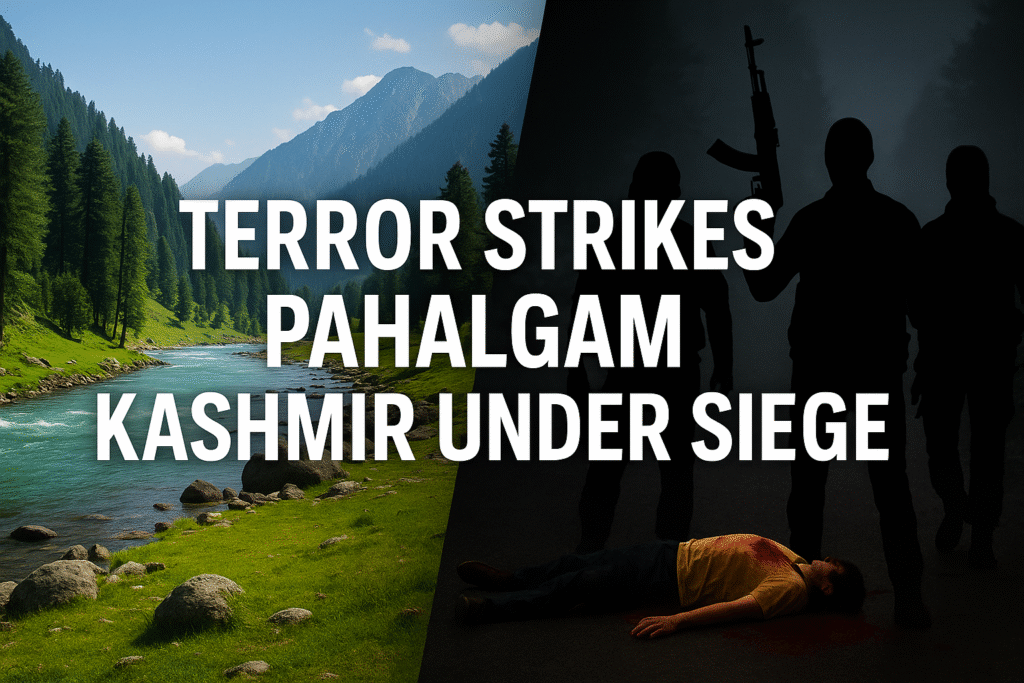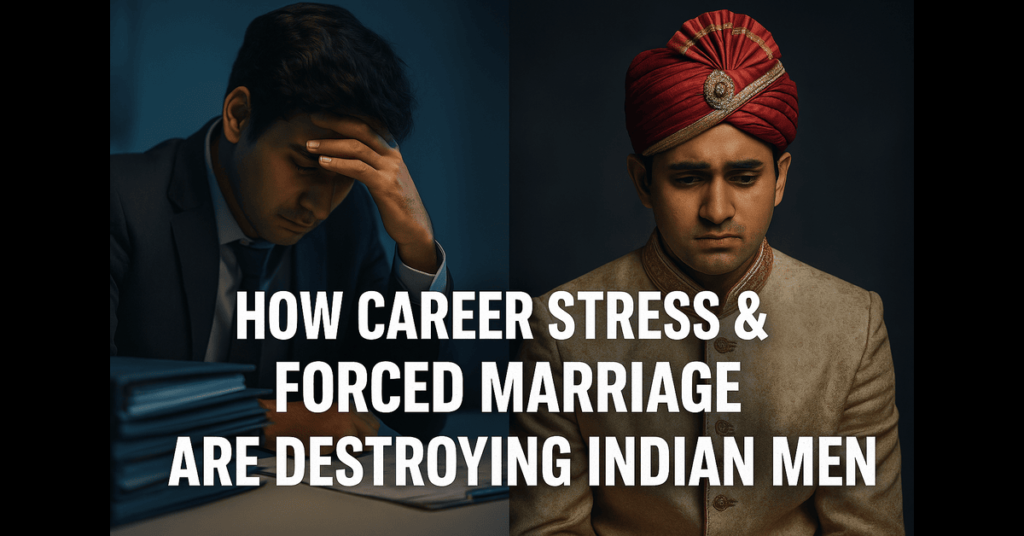Pahalgam Attack 2025: Full Story, Global Reactions
On a sunny April afternoon, the laughter of families picnicking amid pine forests at Pahalgam’s Baisaran meadow was shattered by the crack of gunfire. Terrorists stormed the remote valley around 1:30 p.m. on April 22, 2025, opening fire on tourists with automatic rifles. In minutes, the idyllic scene turned into a “bad dream,” as one survivor described it, with at least 26 people killed and more than 20 wounded. The victims included 24 Indian visitors, a Nepali national, and a local guide. According to police and witnesses, the gunmen, reported to be three heavily armed militants, marched through the meadow firing round after round. They systematically separated men from women and children, sparing the latter while executing the men at close range. One witness said attackers even checked victims’ religious knowledge: a father was forced to recite an Islamic verse and was shot dead when he could not, his daughter recalling “they pumped three bullets into him”.
Table of Contents
ToggleUnderstanding the Pahalgam Attack
Many survivors now share harrowing stories of the ambush. Asavari Jagdale, a young tourist from Maharashtra, told reporters she hide with her family in a tent. When the militants found them, one gunman demanded her father recite verses; when he failed, “they pumped three bullets into him, one in the head,” she said, watching her father die before her eyes. Another survivor, Debasish Bhattacharyya, a university professor who grew up among Muslim neighbors, lived only because he could recite an Islamic prayer. He said the gunmen forced victims to their knees and ordered them to chant verses. “I knew the words and, at that moment, it was probably the only way to save our lives. Those who failed were killed,” he told Reuters.
Pallavi, who had come to Kashmir with her husband Manjunath and their young son, described her loss in chilling detail. “It happened around 1:30 pm… We were at Pahalgam. He died on the spot, in front of my eyes. It still feels like a bad dream,” she said, recalling how her husband was killed instantly. When she pleaded for her own life, one attacker coldly replied in Hindi: “Nahi Marange. Tum Modi ko Jake bolo” (“I won’t kill you. Go tell Modi”).
This statement – part taunt, part message – has haunted her as she struggles with grief. Pallavi managed to escape with her son, thanks in part to local residents: “Three others, who kept saying ‘Bismillah,’ helped us get to safety,” she said.
Several unarmed Kashmiris also died trying to help. Adil Hussain Shah, a Pahalgam pony-ride operator, was among the 26 killed. Jammu & Kashmir Chief Minister Omar Abdullah later praised Shah’s bravery, saying he “tried to stop the attack, and maybe also tried to grab the gun” – actions that made him a target. Another victim, 26-year-old Prashant Satpathy, was hit by a bullet just after finishing a zipline ride with his wife. “He collapsed before my eyes,” his widow Priyadarshini told the media, sobbing. Every death has left a family shattered; images of grieving relatives at airports and hospitals capture the raw human toll.
The Attack Unfolds
In the lush Baisaran Valley (near the site shown above, where security forces later scoured the area), militants in Kashmiri attire roamed and fired roughly 60 rounds of ammunition. The meadow sits about 4 km from Pahalgam town in Anantnag district, a peaceful spot often called “Mini Switzerland” for its scenery. Hundreds of tourists and hundreds of local guides and pony operators were in the area enjoying adventure sports and sightseeing when the assault began. Police and witnesses reported that women and children were largely spared – some women recalled being pushed aside while their male relatives were shot. The five attackers, later identified as members of a Lashkar-e-Taiba-linked group called The Resistance Front (TRF), vanished into the dense forest after the massacre. Indian forces launched an intense manhunt: tens of thousands of troops and police fanned out across Kashmir, setting up checkpoints, searching cars, and scouring mountain terrain with helicopters. The Indian Defense Minister vowed the “harshest consequences” for both the gunmen and their planners.
Key Facts of the Pahalgam Attack (April 22, 2025):
Location: Baisaran Valley near Pahalgam, Jammu & Kashmir.
Time: About 1:30 PM on April 22, 2025
Attackers: 3–5 gunmen, reportedly linked to The Resistance Front (TRF)
Victims: 26 killed (24 Indian tourists, 1 Nepali tourist, 1 local guide) and over 20 wounded.
Modus operandi: Gunmen separated men from women/children, executed males who could not recite Islamic verses.
Security and Political Response
The attack immediately plunged the disputed region into crisis. Indian authorities quickly blamed militants based across the border. New Delhi summoned Pakistani diplomats, closed the main land border crossing, and announced it was suspending the Indus Waters Treaty (a decades-old agreement on sharing river waters) until Pakistan “abjures its support for cross-border terrorism”. India’s Home Minister Amit Shah vowed to “come down heavily on the perpetrators with the harshest consequences”. Prime Minister Narendra Modi cut short a visit abroad and returned to New Delhi to handle the crisis. He condemned the massacre as a “terror attack” and promised justice for the victims.
Locally, troops and police intensified patrols. By the next day, tens of thousands of security personnel were combing forests and valleys. Checkpoints were set up on highways, shops and offices briefly closed in protest, and suspected militants (even former insurgents) were rounded up for questioning.
Kashmir’s top elected official, Mehbooba Mufti, called the shooting “inhuman,” while separatist leaders urged calm and restraint. In the hours after the attack, local journalists and officials confirmed that The Resistance Front (TRF), a previously unknown militant outfit, claimed responsibility on social media. A TRF message posted online blamed “outsiders settled by Indian authorities” for unrest, though the claim could not be independently verified.For context, the Pahalgam ambush is one of the deadliest attacks on civilians in Kashmir in decades. In recent years, militants have mostly targeted security forces, but civilians have not been completely spared.
For example:
July 2017 – Gunmen ambushed a bus of Hindu pilgrims returning from the Amarnath shrine, killing at least seven
February 2019 – A suicide car bomb in Pulwama killed 40+ paramilitary soldiers on a convoy.
June 2024 – A bus carrying Hindu pilgrims plunged off a cliff after suspected gunmen attacked, killing nine.
October 2024 – Militants opened fire on migrant laborers, killing six construction workers and a doctor.
Despite these dangers, Kashmir has promoted tourism in recent years, drawing millions to its mountains. Officials noted that the region remained generally peaceful compared to past decades, even as underlying tensions persisted.
Global Condemnation
The Pahalgam massacre drew immediate international outrage. Leaders around the world voiced solidarity with India and condemned the violence. U.S. President Donald Trump (writing on social media) declared, “The United States stands strong with India against terrorism,” offering India “our full support and deepest sympathies”. French President Emmanuel Macron called it a “heinous terrorist attack” and extended his “heartfelt condolences” to the victims’ families.
British Prime Minister Keir Starmer described the incident as “utterly devastating” and offered thoughts to those affected. UN Secretary-General António Guterres strongly condemned the attack and stressed that “attacks against civilians are unacceptable under any circumstances”. Germany’s Chancellor Olaf Scholz sent condolences and said Germany “strongly condemns” the heinous” assault on tourists.
Other countries echoed these sentiments: Turkey, Russia, Australia, and Israel all issued statements of support for India. For instance, Israel’s foreign minister called the attack “heinous” and said, “Israel stands united with India in the fight against terror”. Even China, despite frosty ties, publicly expressed shock and “deep condolences for the victims” through its ambassador to India. In the United States, Senate Foreign Relations Committee member Marco Rubio wrote on social media simply: “The United States stands with India.” Back in India, religious leaders and politicians of all stripes condemned the killings. Kashmiri cleric Mirwaiz Umar Farooq urged peace, saying such “violence is unacceptable and against the ethos of Kashmir, which welcomes visitors with love and warmth”.
Remembering the Victims – Looking Forward
Across India and Kashmir, grieving communities have sought comfort in unity. Candlelight vigils were held from Srinagar to Delhi as citizens mourned strangers who were in the mountains seeking joy, not violence. From a small hamlet in Maharashtra to a temple town in Nepal, families grappling with loss are receiving a flood of support. Local Kashmiris – many Muslim – have joined Hindu villagers to bury the dead and help wounded tourists return home.
The emotional scars of Pahalgam will take time to heal. But in the midst of grief, voices of compassion emerge. A Kashmiri shopkeeper at a Srinagar bazaar voiced a common sentiment: “We all used to see tourists, now these terrorists have hurt us too.” And as Mirwaiz Farooq’s words remind everyone, the people of Kashmir overwhelmingly seek peace and normalcy. Prime Minister Modi echoed this resolve, vowing that the “evil agenda” of the attackers will never succeed.
In the end, the valley’s pine trees continue to stand tall under the Himalayan sky. The memories of those who died here – and the heroism of those who helped strangers – have been seared into the hearts of survivors. Yet there is hope: hope that justice will be served, and that the valley’s famed hospitality will outlast the memories of horror. As the world remembers the 26 lives cut short in Pahalgam, people everywhere – from Kashmir to capitals around the globe – stand united in mourning and in a shared wish that such violence never returns to these mountains.
ALSO READ: “How Career & Marriage Pressure Are Silently Destroying Indian Men 😔”
What happened during the Pahalgam Attack 2025?
On April 22, 2025, terrorists attacked tourists at Baisaran Valley near Pahalgam, Jammu & Kashmir, killing 26 people and injuring more than 20 others. The attackers separated men from women and children, executing many of the men.
Who was responsible for the Pahalgam Attack?
The attack was reportedly carried out by militants linked to The Resistance Front (TRF), a Lashkar-e-Taiba-affiliated group.
How did the Indian government respond to the attack?
India launched a massive security operation, summoned Pakistani diplomats, and suspended cooperation agreements like the Indus Waters Treaty. Prime Minister Narendra Modi and Home Minister Amit Shah vowed strict action against the perpetrators.
How did the international community react to the Pahalgam Attack?
Countries like the United States, France, the United Kingdom, Germany, and even China strongly condemned the attack and expressed solidarity with India. Global leaders called it a “heinous” and “inhuman” act.
What was the method used by the terrorists during the attack?
The militants, disguised in Kashmiri attire, separated men from women and children, testing some victims’ religious knowledge before executing them with gunfire.
Who was Asavari Jagdale’s father and how did he lose his life during the Pahalgam attack?
Asavari Jagdale’s father, a tourist from Maharashtra, tragically lost his life when militants forced him to recite an Islamic verse. Unable to do so, he was shot three times at close range in front of his daughter. Asavari described the horrifying moment as something out of a “bad dream.”
How did Pallavi lose her husband during the Pahalgam tragedy?
Pallavi’s husband, Manjunath, was killed instantly during the attack while picnicking with his family. Pallavi pleaded for mercy, but a terrorist chillingly spared her only to send a haunting message: “Go tell Modi.” Pallavi survived with her son but continues to live with the trauma of that day.
Who was Adil Hussain Shah and what did he do during the attack?
Adil Hussain Shah, a local pony-ride operator from Pahalgam, showed extraordinary bravery by trying to confront the attackers. His courageous actions likely cost him his life, and he was praised posthumously as a “martyr of humanity” by local leaders.




hello sir nice blog you have written.